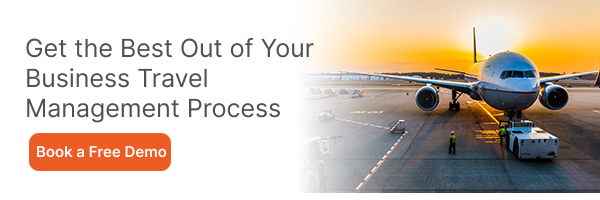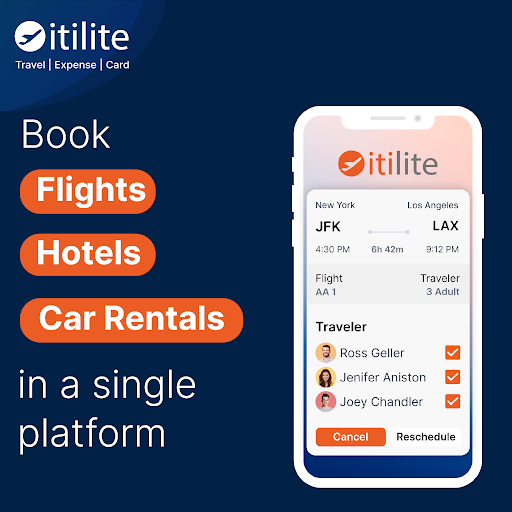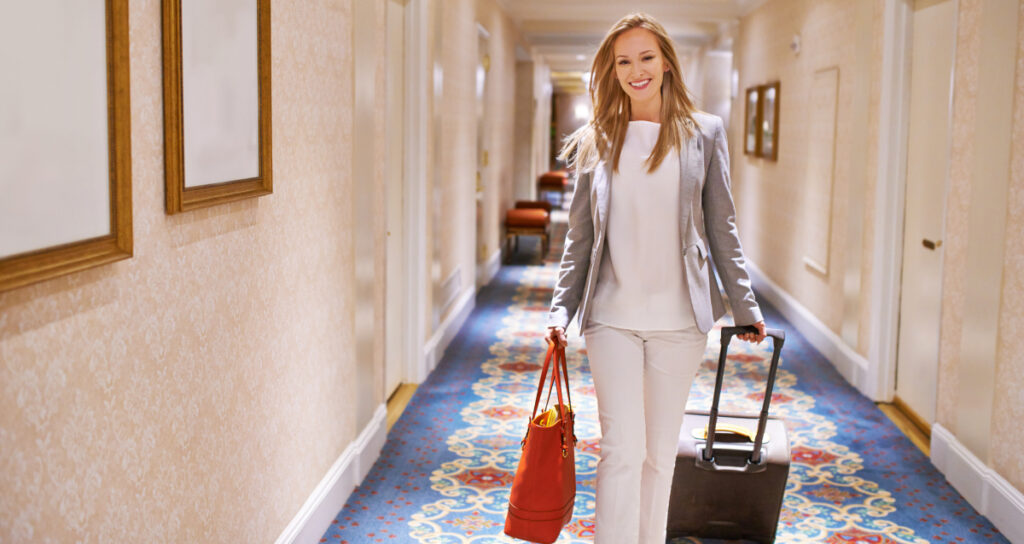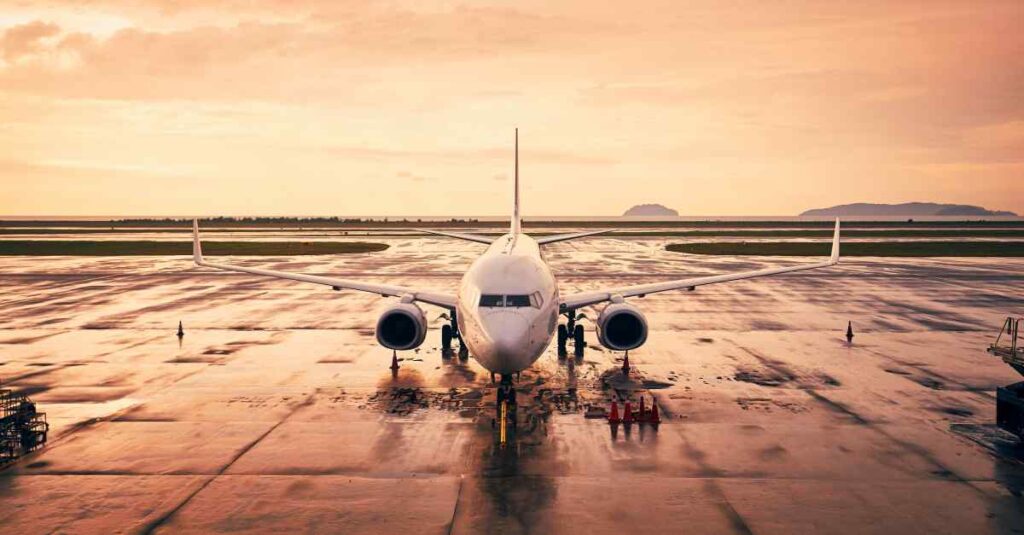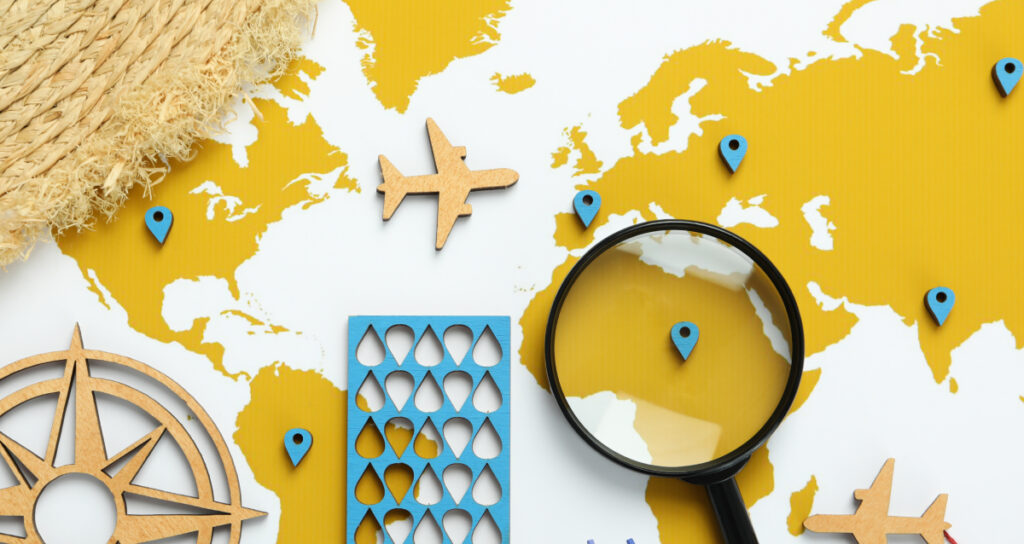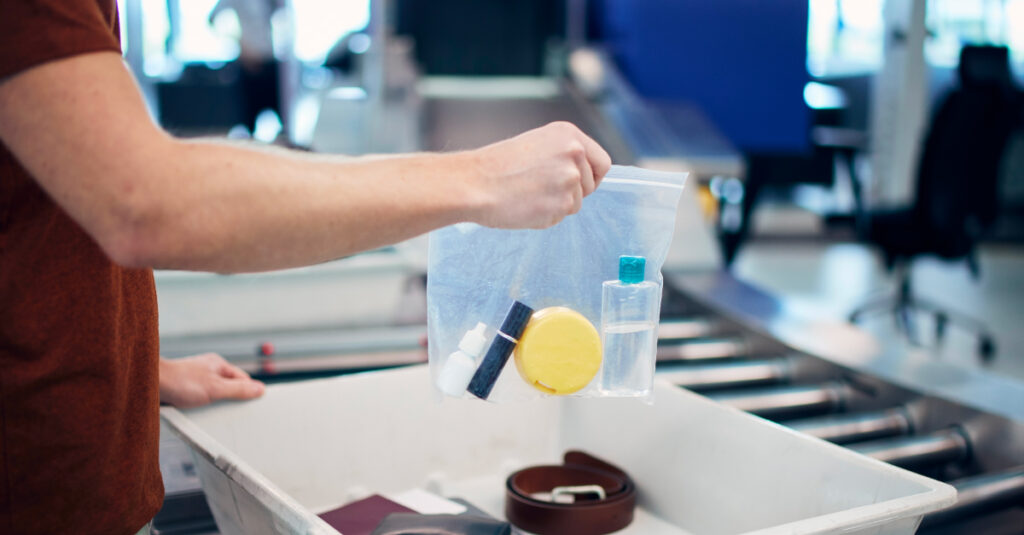
If you are a frequent business traveler, you must be familiar with airport security check-ins. During the check-in, you must also have noticed an important rule issued by the Transportation Security Administration (TSA) called the 311 rule. What is the 311 rule for TSA? This rule implies how much liquid travelers can carry in their carry-on bags during their flight journey.
However, many travelers still do not understand the 311 rule, what it implies, and its importance. Hence, in this blog, we will help you understand what is the 311 rule when flying and how it applies to your travels.
What is the 311 Rule?
The 311 rule is a standard set of rules and regulations implemented by the TSA that governs the transport of liquids, gels, and aerosols in carry-on baggage while going through security checkpoints. These regulations are in place for security reasons so that hazardous liquids or chemicals that can threaten passengers, flight crew, and aircraft are not transferred or carried.
Understanding and adhering to this rule can make your security screening process a breeze. It also helps you save time instead of going through the hassle of standing in long queues at the airport. And whether you’re a carry-on-only traveler or not, knowing what is the 311 rule for TSA is very important.
Understanding 311 Liquids
The term ‘311 liquids’, also known as the TSA’s liquid limit, refers to the specific criteria outlined by the TSA regarding the quantity, quality, and packaging of liquids. By limiting the number of liquids that can be carried onto a flight, authorities aim to reduce the risk of potential threats such as explosives or flammable substances that can cause harm to passengers.
Suggested Read: TSA PreCheck: Everything You Need To Know and More
Here’s What the 311 Rule Stands For
The 311 rule description emphasizes bolstering airport security measures, particularly in response to post-9/11 concerns regarding potential threats posed by liquids onboard aircraft.
Why the 311 Rule Matters?
- Three: The number 3 signifies the number of liquids allowed for individual carrying, such as aerosols, gels, sprays, etc. Each container should contain no more than 3.4 ounces of liquid.
- One: The number 1 signifies that travelers can carry only one quart-sized, clear plastic bag to hold all their 311 liquids. This bag must be transparent and resealable, which makes it easy for airport officials to check its contents.
- One: The last number, 1, signifies that the TSA mandates that each traveler be allowed only one bag to carry their 311 liquids. Combining all the liquids in a single suitcase ensures a smooth travel screening process.
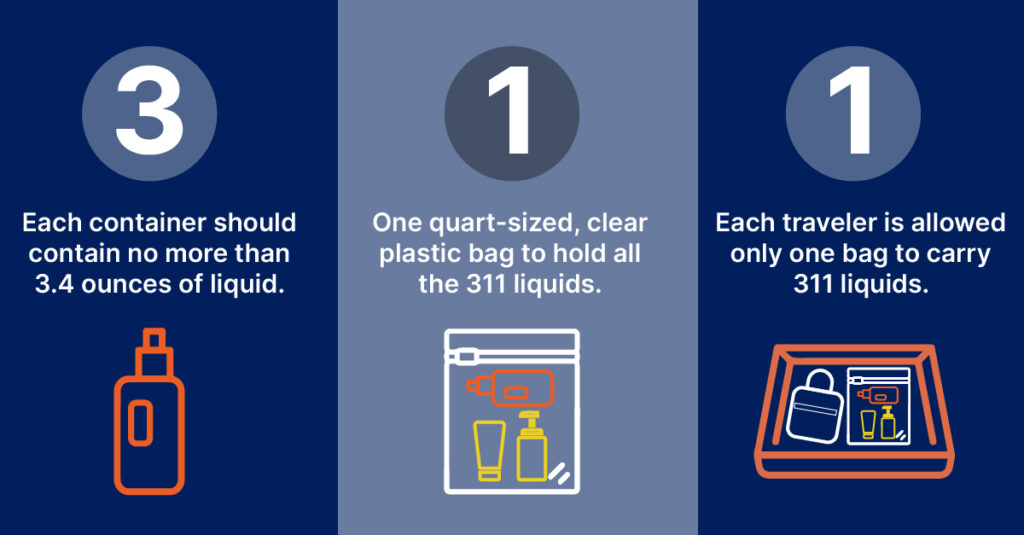
What are 311 Liquids?
As mentioned above, the 311 liquids are the specific criteria set by the TSA. But what are the 311 liquids and which liquids exactly come under this category?
Some of the 311 Liquids You Can Carry:
- Shampoo and conditioner
- Lotion and moisturizer
- Toothpaste
- Perfume and cologne
- Liquid foundation and makeup remover
- Sunscreen
- Contact lens solution
- Liquid soap
- Hair gel or styling products
- Aloe vera
In other words, you can carry all these 311 liquids as long as they are in travel-sized containers. After this rule, many travelers have found it to be easy and convenient while going through the screening process. Hence, this makes your security checking process hassle-free.
Suggested Read: Airport Liquid Limits: A Must-Know for Corporate Travelers
What are the Exceptions Under 311 Liquids?
Although there is a limit on 311 liquids, there are a few exceptions that you can carry. You can carry full-sized bottles for the following:
- Hand-sanitizer: After the outbreak of COVID-19 in 2020, the TSA allowed its passengers to carry hand sanitizer. The sanitizer is allowed up to 12 ounces and is subject to separate screening.
- Medications: You can carry medical liquids, aerosols, or gels through security. Medicines like cough syrup, ice packs, pain relief gels etc are allowed. You need not store them in a plastic, transparent, or resealable container. However, you must remove them from your carry-on luggage for security checks. Inform the TSA officer beforehand so that your security check-in goes smoothly.
- Baby formula or breast milk: Just like medications, you can keep powder, powder-like substances, baby formula, or breast milk. But again, they have to go through the screening process. Although the limit to baby formula and breast milk is unknown, it is better to check with the airlines you’re flying. Every airline has different regulations.
Tips to Help you Navigate through the 311 Liquid Rule Smoothly
- Plan Ahead: Before your next trip, glance at the number and types of liquids you carry. Identify which liquids are considered gels, aerosols, sprays, etc. This will help you plan in advance and according to the TSA precheck rule.
- Invest in Travel-Sized Containers: Always buy travel-sized mini containers that meet the TSA requirements for carrying liquids. These containers are usually around 3.4 ounces or less in capacity and are ideal for transferring your favorite toiletries.
- Consolidate Your Liquids: Consolidate all the permissible liquids in one quart-sized container. Acceptable liquids include shampoo, conditioner, body lotion, shower gels, toothpaste, etc. Keep all these liquids in one bag. This makes it easier for the TSA officers to screen and verify during security checks.
- Know Your Exemptions: Remember the exemptions to the 311 rule mentioned above. These are for essential items such as medications, baby formula, and breast milk. Although they are allowed, inform the TSA officers if they exceed 3.4 ounces.
- Keep It Accessible: Pack your quart-sized containers in a way that makes them easily accessible. This will allow you to remove and place them back during the security checks, saving time and reducing the hassle.
- Consider Alternative Options: If you’re unsure about carrying certain liquids or want to minimize them, consider alternative options. For example, you can carry solid toiletries or powdered formulas instead of shower gels or baby formula. This will help simplify your packing process and reduce the need for additional screening.
- Stay Updated: Stay updated with any changes regarding the 311 rule that come with regulations or the security check-in process. You can find out from the TSA’s official website or mobile app or call the airlines for the latest guidelines.
- Be Patient and Cooperative: Last but not least, you have to stay calm and composed during the security checks. After all, the TSA officers are there to ensure the safety of all travelers. Follow the instructions diligently given by the security personnel. With proper coordination, the screening process will be a breeze.
Know what is the 311 Rule before Boarding your Next Flight
There is no doubt that the 311 rule is here to stay. Travelers can seamlessly navigate airport security checks by understanding the intricacies of the 311 rule or the TSA liquid limit. This will help you pack strategically and stay updated with the latest regulations about the liquid limits you must carry. Following the tips mentioned above will make the screening process seamless and hassle-free.
With technological advances, liquid limit regulations can change anytime based on situations. As a traveler, you must stay updated with the latest information. itilite can help you with that. The corporate travel management company provides real-time travel alerts to all its users so they don’t miss out on anything. Moreover, you also get round-the-clock travel support via chats, calls, and emails that will help you navigate any issues like a breeze. This way you will know what is the 311 rule and any information related to travel.
Want to know more about itilite? Get in touch with our product experts now!

